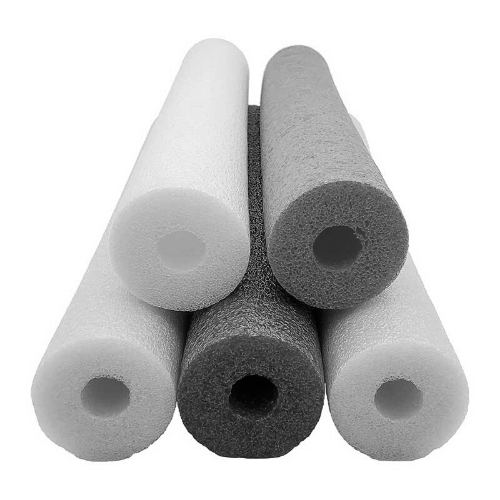Pool noodles (also called waterlogs), sold under the brad names of Water Woggles and FunNoodles, are buoyant cylindrical foam toys. They are often hollow, usually approximately 160 cm long, with a diameter of approximately 7 cm. Pool noodles can be attached together, they can be cut to specific lengths, and they can be attached to other objects to create small floating structures.
Pool noodles are believed to have been first made and invented in the Province of Ontario, in Canada, in the early 1980s. Inspired by an item found commonly in constructions sites: foam ‘backer rods’ fill gaps in buildings under construction. Once colour was added in manufacturing the polyethylene foam, they became a popular water toy.
Due to the buoyancy of the pool noodle, it can be used in aquatherapy, pool therapy, and other physiotherapy practices. Pushing the pool noodle against the resistance of the water results in a gentle form of exercise, popular with geriatric and arthritic clients. Pool noodles can be used to assist non-swimmers in water situations, although since it is not a life preserver or a flotation device, its use must always be appropriate to the situation and the relevant patient population, and used with supervision.
Description provided by Sarah Marshall of Canada.
References:
Osborne R 2012. Uncovering the History of the Pool Noodle: Meet the Inventor, Water Crunch.
Accessed online at http://watercrunch.com/2012/08++++/pool_noodle/
Pool Noodle. 2014. Wikipedia. Accessed online at http://en.wikipedia.org/wiki/Pool_noodle

